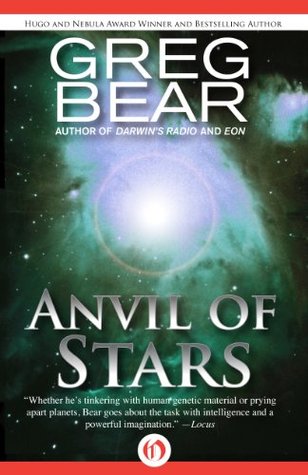Sequel to the visionary yet slow and painful Forge of God, Anvil of Stars is a completely different work, both in character and tone. After the destruction of the Earth, surviving adults settle to live out the end of their lives on Mars, while children volunteer to enact The Law, seeking vengeance for Earth. Training for battle year after year, hurtling through space, the children are provided for by the aliens who their species, the Benefactors or Mothers, in all except for normal human societal guidelines.
Martin, newly elected Pan, or leader of the group of teenagers, is abnormal in that he does not constantly have sex with a wide variety of partners; in fact, he’s embarrassed for anyone to know he’s only had three, two Wendys and one Lost Boy. As Martin questions the lack of communication between the humans and the Benefactors, believing them to be withholding vital information, a star system is discovered that may be their murderer’s home.
In Forge of God, I struggled with the lack of control, in Anvil of Stars, we’re given too much. Armed with technology they cannot understand, the last remaining children of Earth must choose to enact retribution with limited facts. Is there enough evidence that this is the Killer’s home? Is there enough evidence to send a world of potential innocents to their death, thereby becoming Killer’s themselves? In the face of such moral decisions, can they survive destruction from within their ranks?
Although Anvil of Stars is much more action-packed than Forge of God, it’s still pretty slow. There is only one primary protagonist, but Martin is reserved, sullen, and wracked with indecision. Recommended for hard scifi fans interested in philosophical quandaries about the cost of war and the right the kill.
“The Law requires destruction of all intelligences responsible for or associated with the manufacture of self-replicating and destructive devices.”
